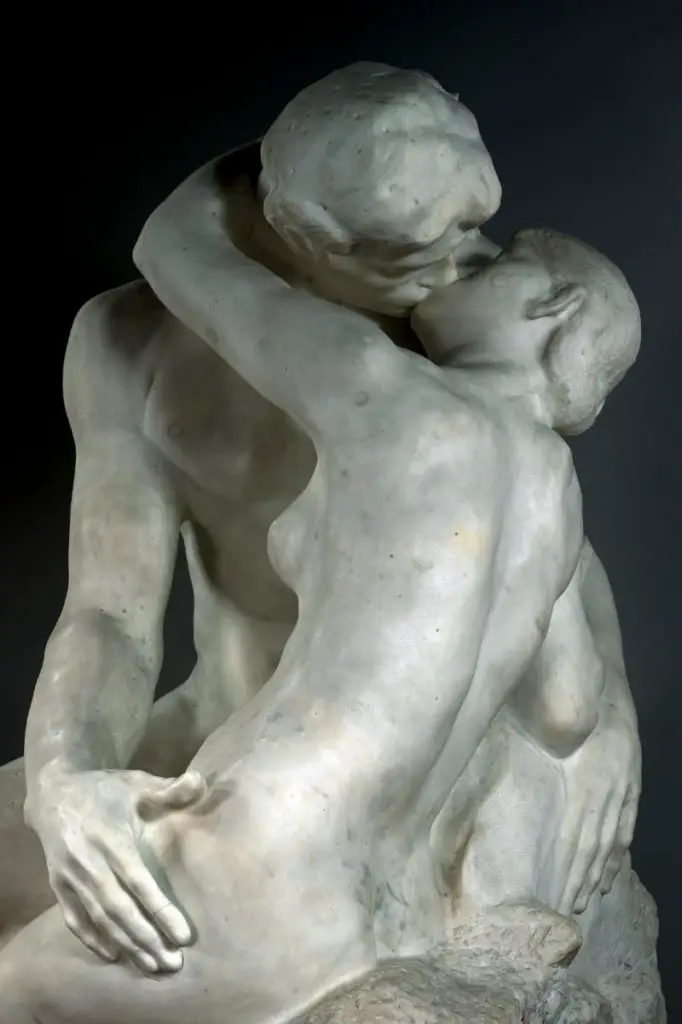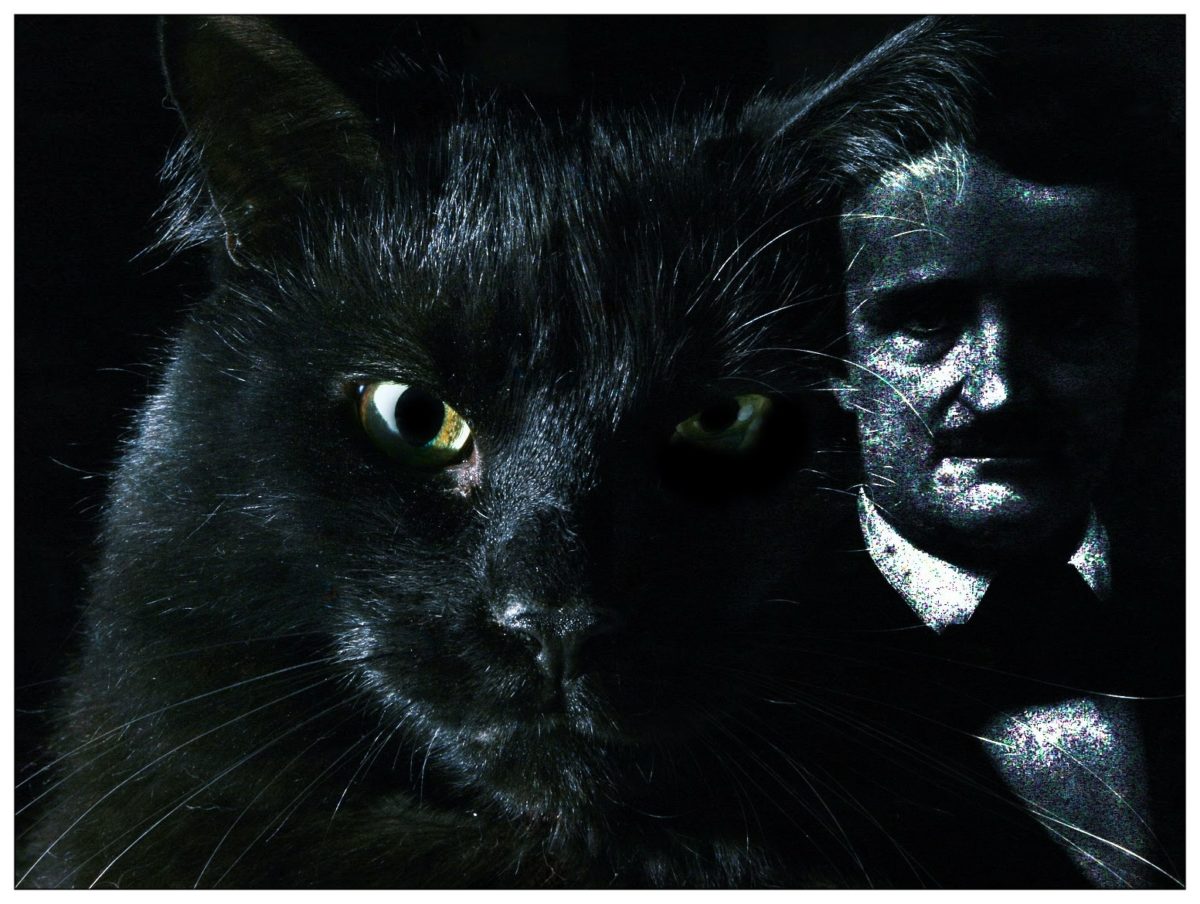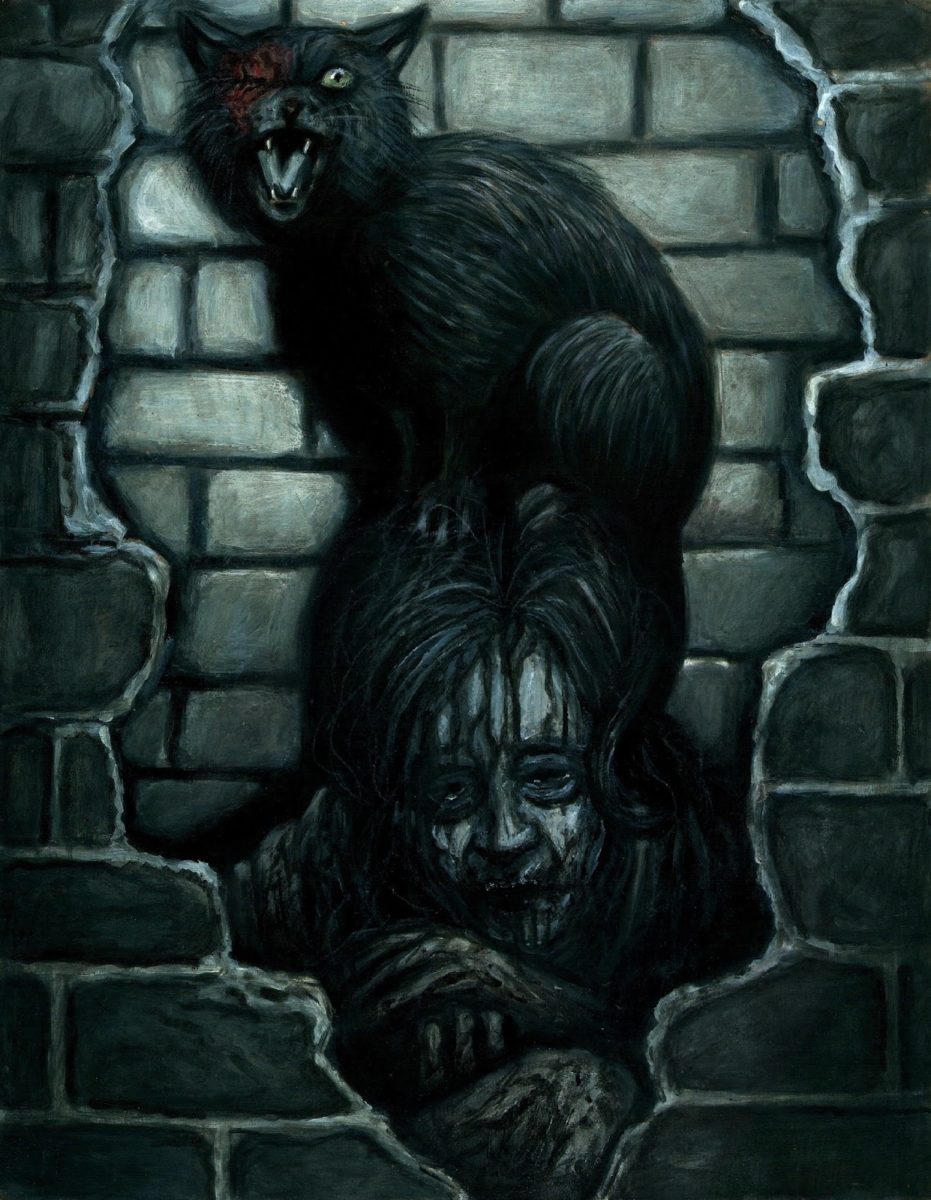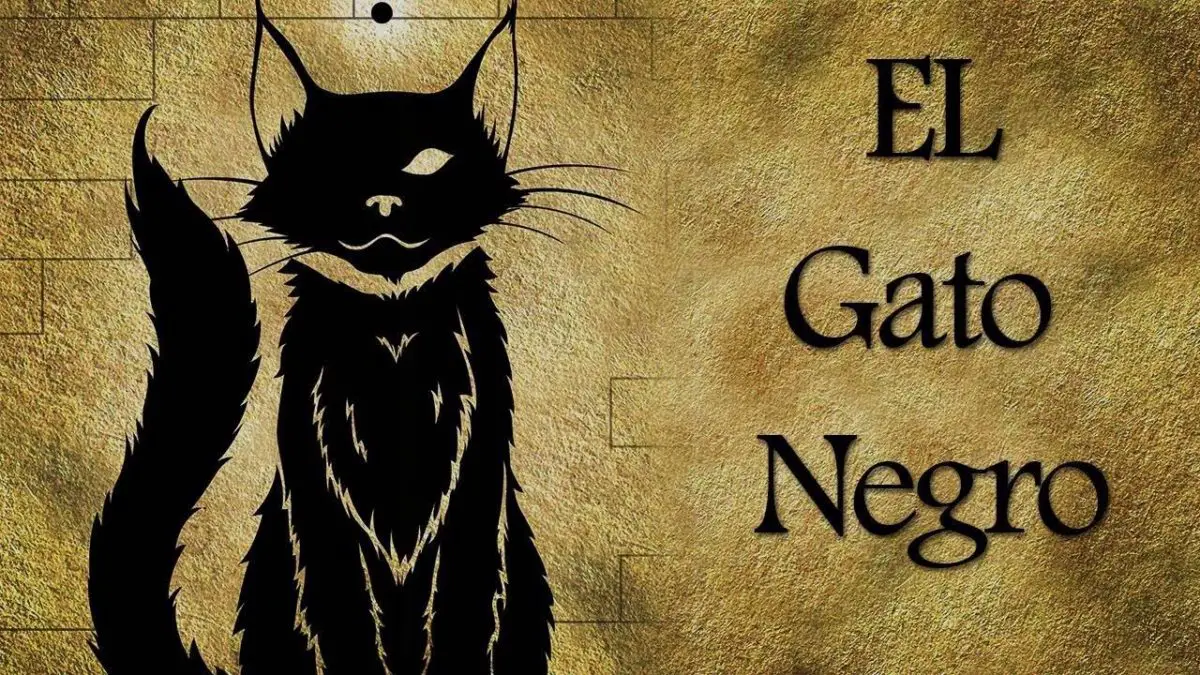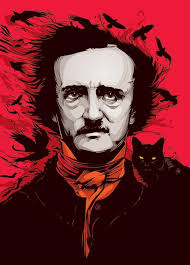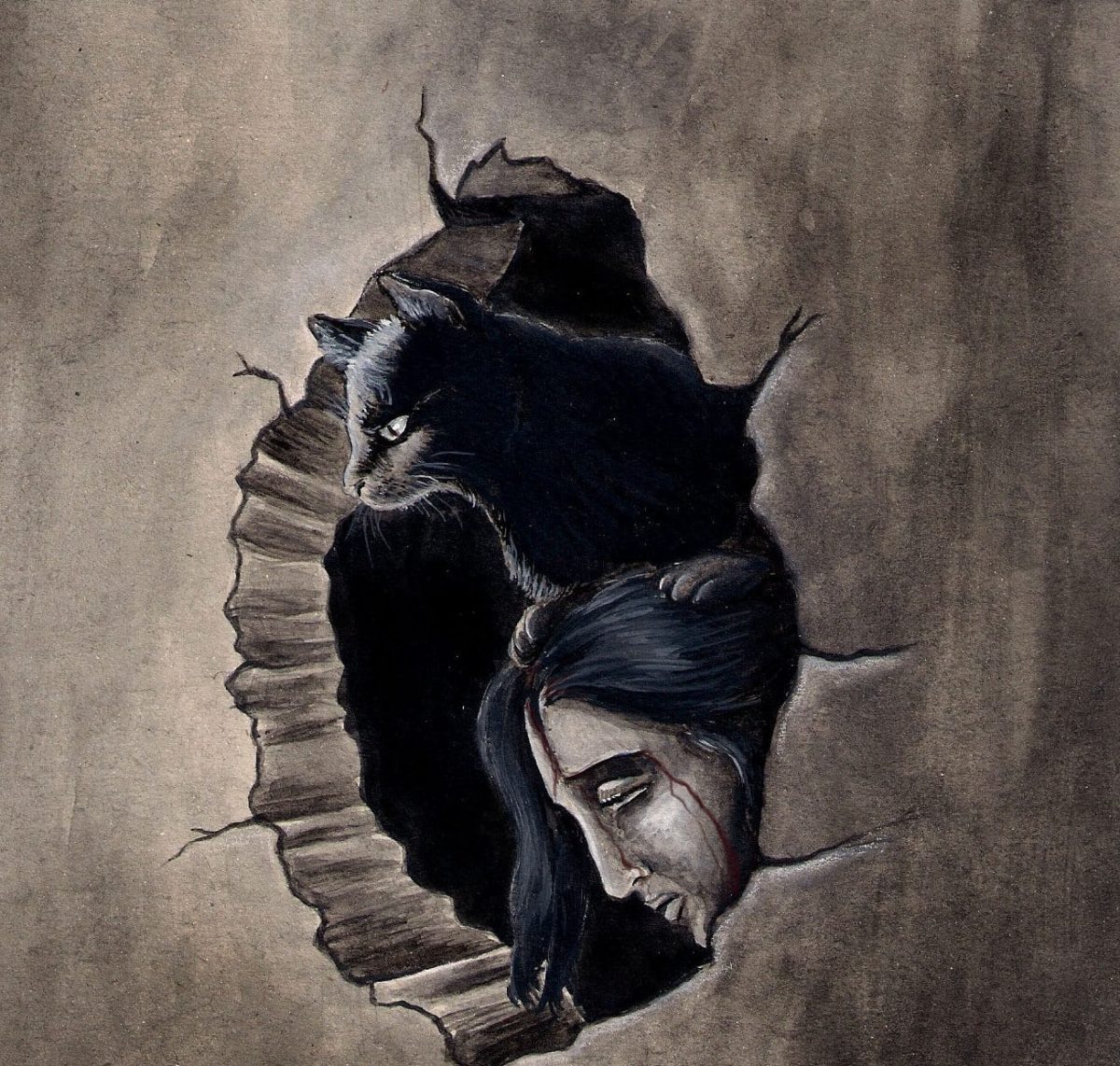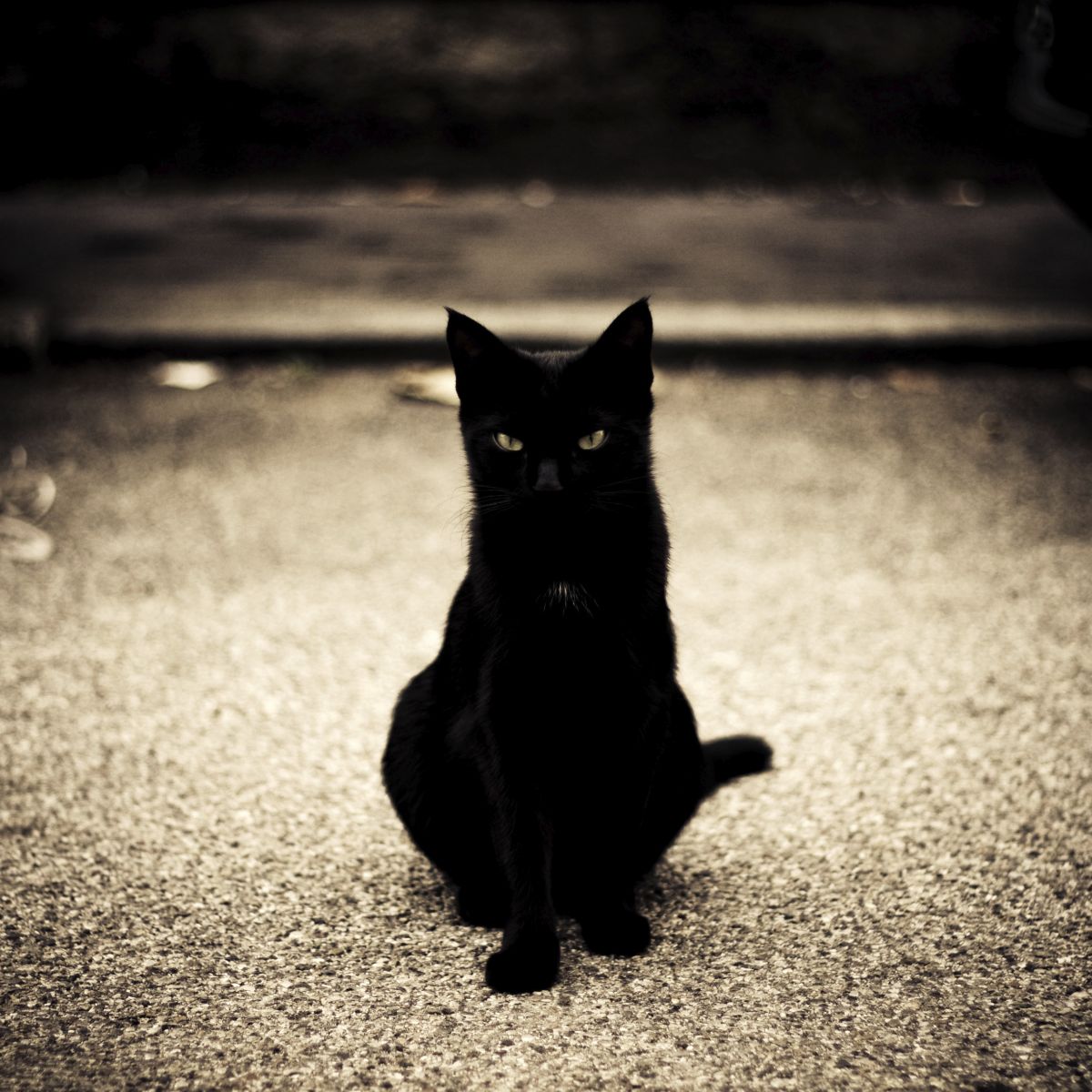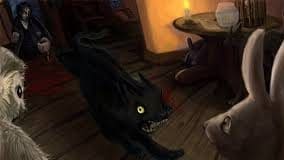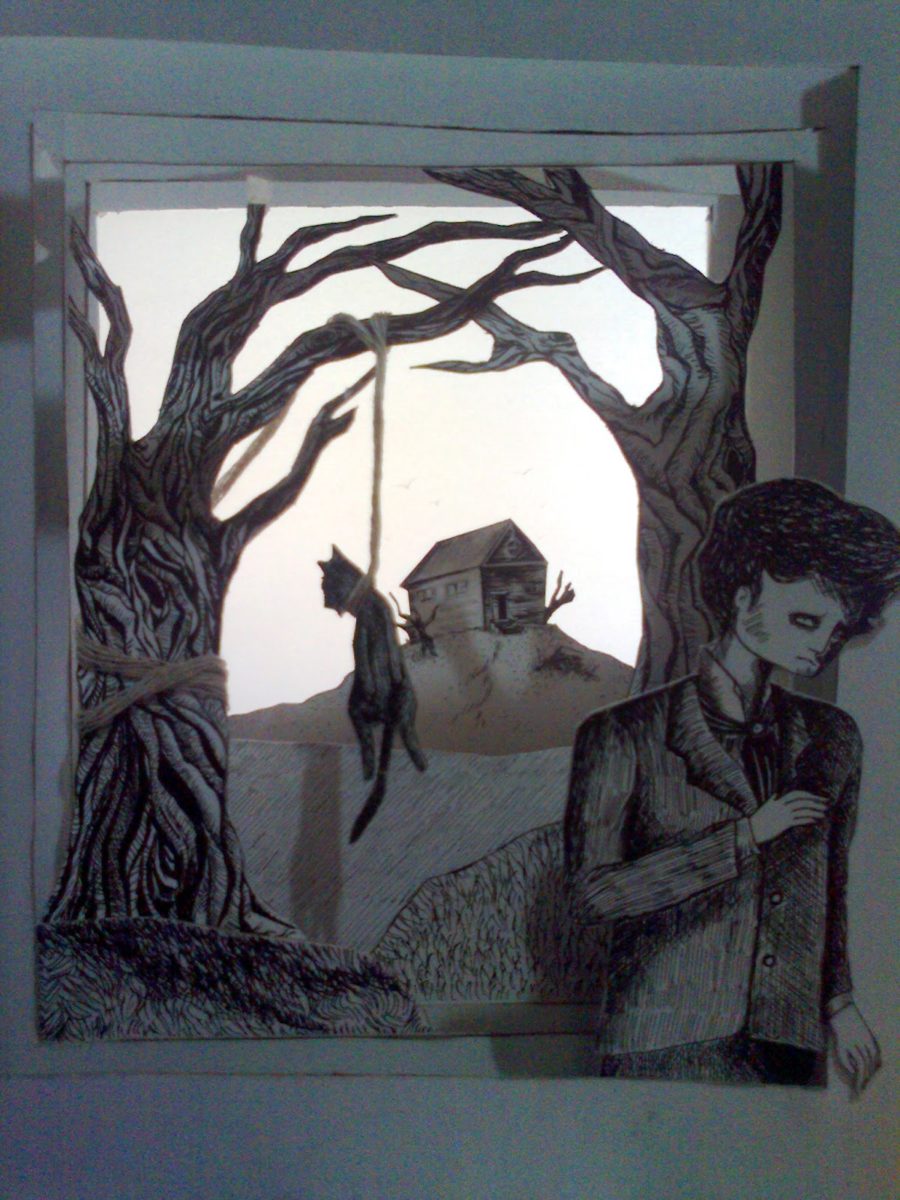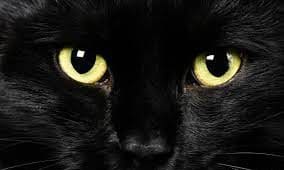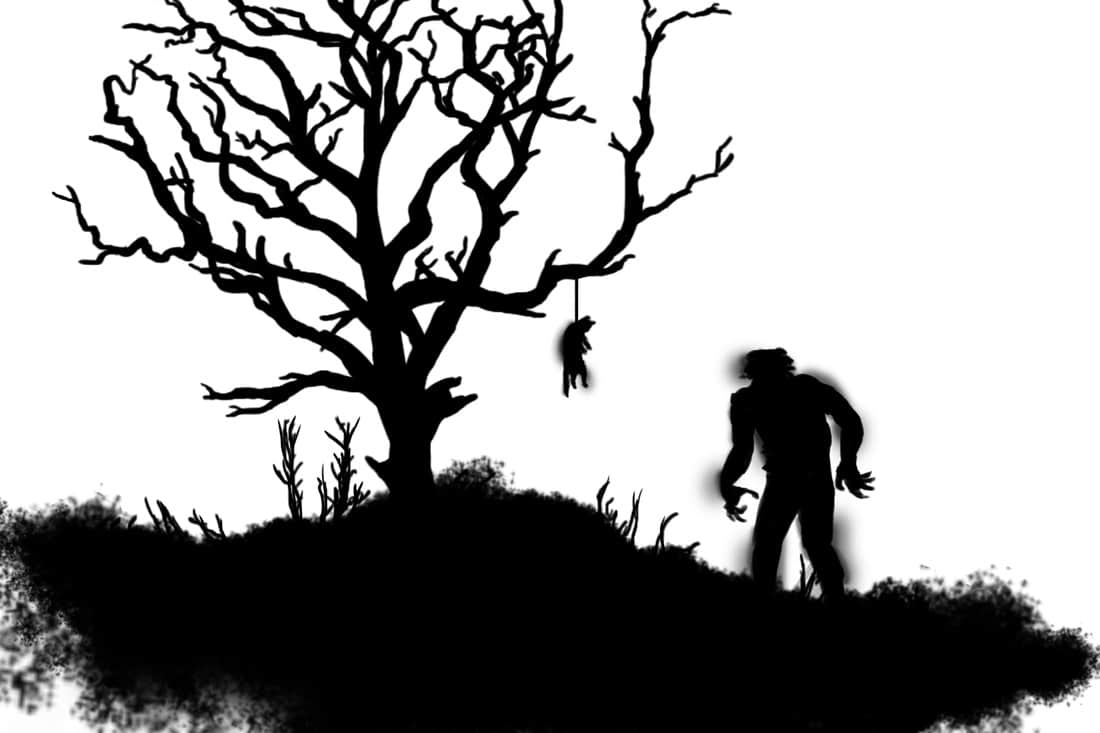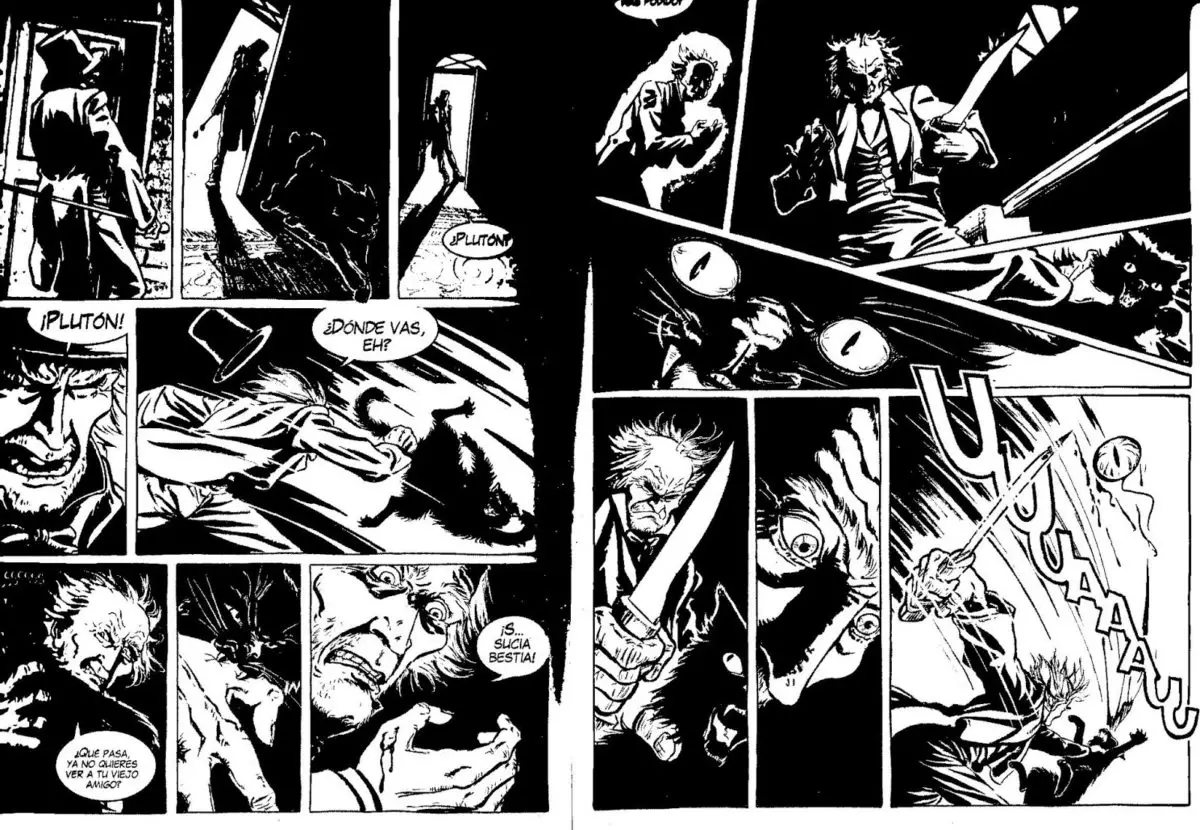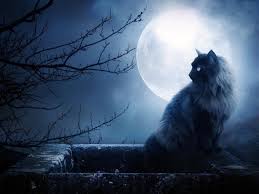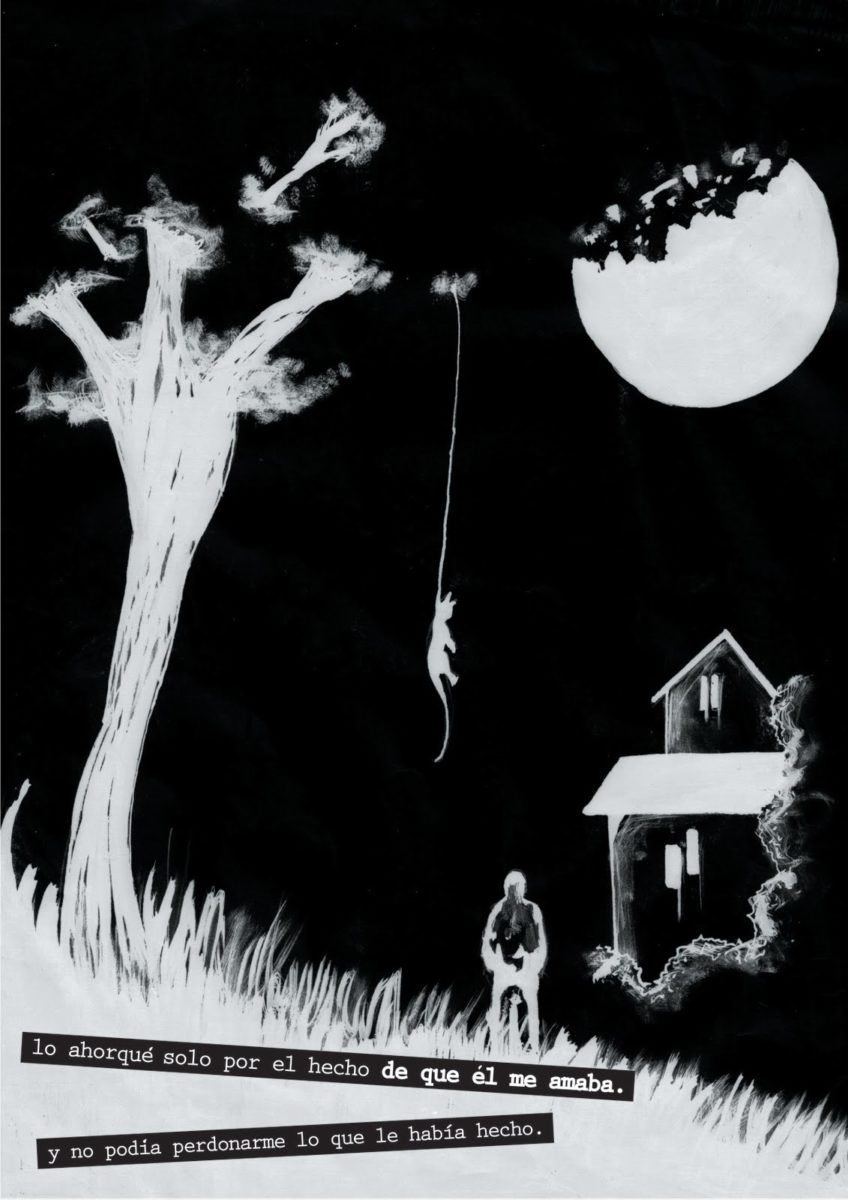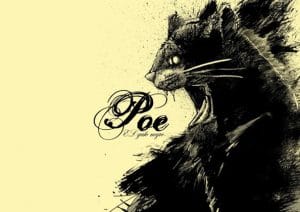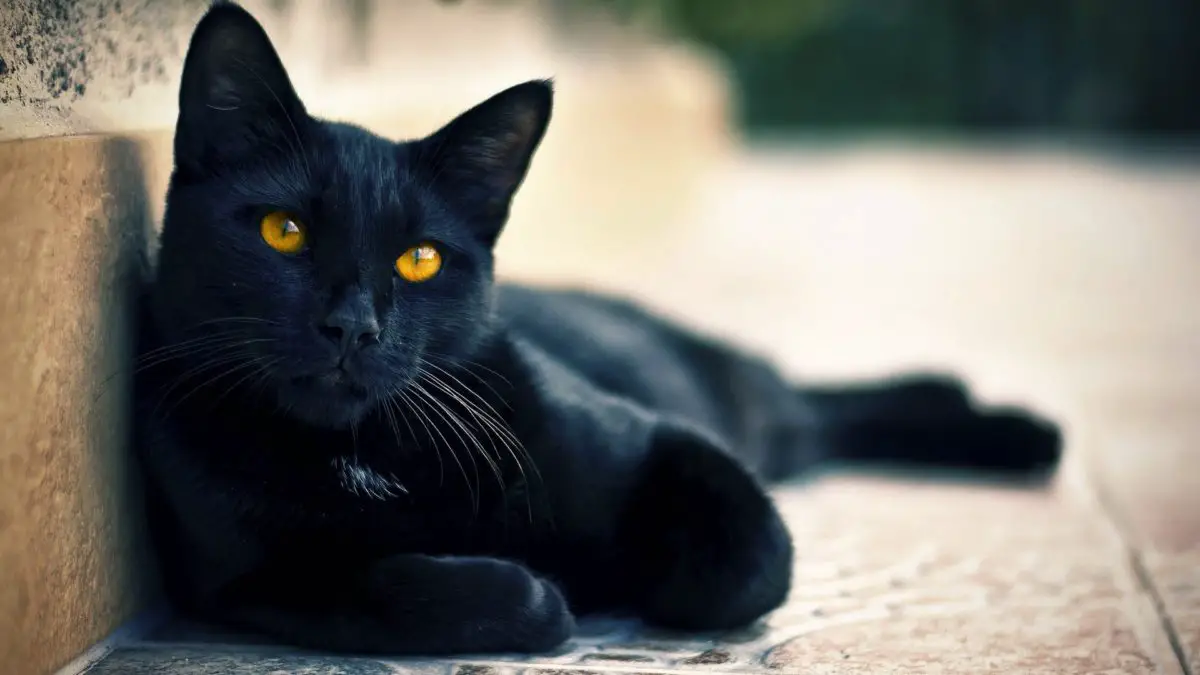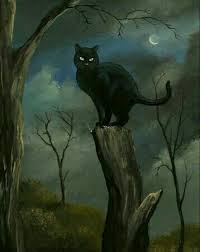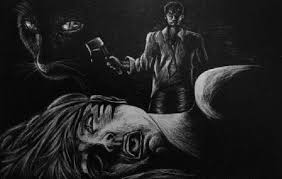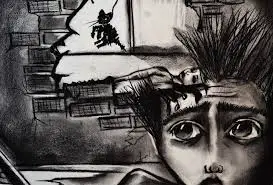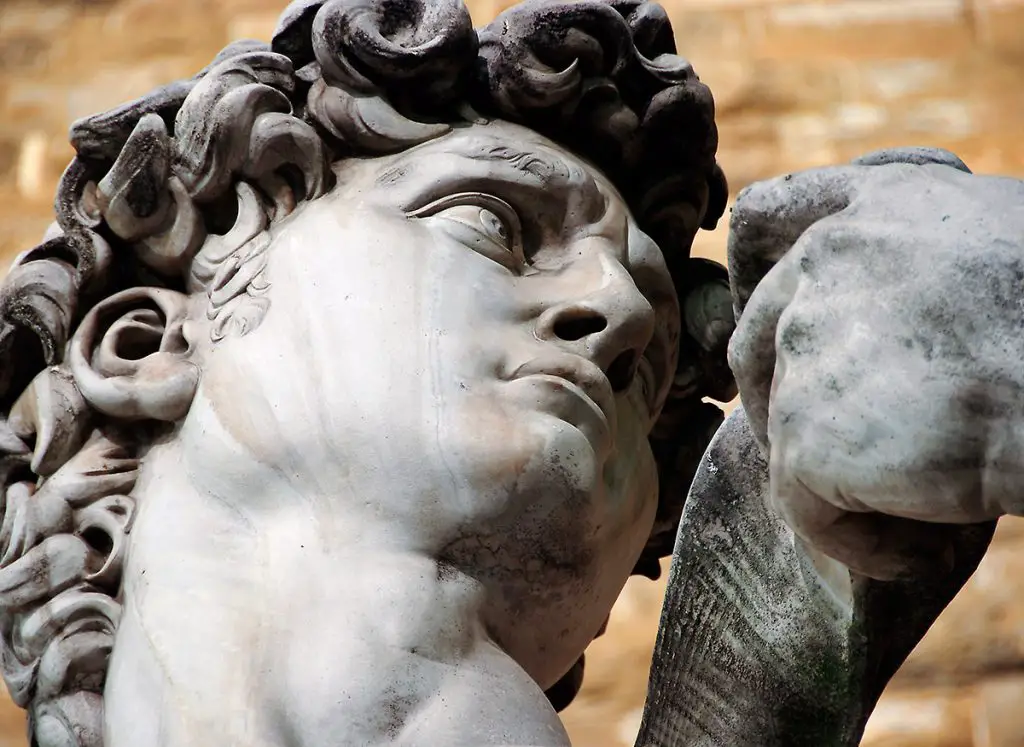The Black Cat is a short story by the American writer Edgar Allan Poe. It was first published on 19 August 1843. Read on to find out all about the novel.
Summary of The Black Cat
The protagonist is a doomed man at the beginning of the story. The narrator tells us that he has loved animals from an early age. He and his wife have many pets, including a large and beautiful black cat (as described by the narrator) called Pluto. This cat is particularly fond of the narrator and vice versa. (If you want to read a different kind of cat story, you can read The Cat Who Found God).
Su amistad mutua dura varios años, hasta que el narrador se convierte en alcohólico. Una noche, después de
When he returns home drunk, he thinks the cat is avoiding him.
When he tries to grab it, the frightened cat bites the narrator and, in a fit of rage, he grabs the animal, takes a knife from his pocket and deliberately gouges out the cat’s eye.
From that moment on, the cat flees in terror at the approach of its master. At first, the narrator feels remorse for his cruelty. “But this feeling soon gave way to irritation. And then, as if for my final and irrevocable overthrow, came the spirit of perversity”.
One morning he takes the cat out into the garden, ties a rope around its neck and hangs it from a tree, where it dies. That same night, his house mysteriously catches fire, forcing the narrator, his wife and his servant to flee.
The next day, the narrator returns to the ruins of his house to find, on the only wall that survived the fire, the image of a gigantic cat with a rope around its neck.
At first, the narrator is deeply disturbed by this image, but he gradually finds a logical explanation for it: someone outside cut the cat from a tree and threw the dead creature into the bedroom to wake it up during the fire.
The narrator begins to miss Pluto and feels guilty. Some time later, he finds a similar cat in a tavern. It is the same size and colour as the original, even missing an eye. The only difference is a large white patch on its chest.
The narrator takes it home, but soon begins to loathe and even fear the creature. After a while, the white patch of fur begins to take shape and, to the narrator, forms the shape of the gallows.
This frightens and angers him even more, and he avoids the cat whenever possible. Then one day, when the narrator and his wife are visiting the basement of their new house, the cat gets under the master’s feet and almost knocks him down the stairs.
Enraged, the man grabs an axe and tries to kill the cat, but is stopped by his wife, whom he kills in a rage instead. To hide her body, he removes bricks from an opening in the wall, places her body there and repairs the hole.
A few days later, when the police arrive at the house to investigate the woman’s disappearance, they find nothing and the narrator is released. The cat, which he also wanted to kill, has also disappeared. This gives him the freedom to sleep, even with the burden of murder on his mind.
On the last day of the investigation, the narrator accompanies the police to the cellar. Then, in complete safety, the narrator comments on the solidity of the building and the knocking on the wall he had built around his wife’s body.
A loud, inhuman wailing fills the room. The alarmed policeman knocks down the wall and finds the wife’s body, and in its rotting head, to the narrator’s absolute horror, the screaming black cat. As he puts it: “I had walled up the monster in the grave!
Here is a video summary of this work by Edgar Allan Poe:
Characteristics of the Black Cat
After writing so many grotesque and horrific stories, one might think that Edgar Allan Poe’s personality would be similar to his characters, but in fact the opposite is true. Poe had many loving relationships and was very fond of animals, especially cats.
The Black Cat became an example of how Poe got into the mind of someone so obsessed that he could commit murder for no good reason. You might want to look at another book in this style, The Psychoanalyst.
The narrator of this story is a nameless murderer who tries to convince the reader that he is not insane and should not be held responsible for the crimes he is accused of.
Puesto desde el punto de vista de un hombre que esta a punto de ser ahorcado se ve la desesperación por persuadir al lector de que es inocente.
Poe does not give many details about the main character, but the whole story of the novel is centred around him and can have several points of view from the reader’s point of view:
The prison cell: a cramped space where the narrator/protagonist examines his actions and his life, and where he still refuses to take responsibility for his actions.
The narrator’s home: His first house is turned into a prison for his wife and pets; through reading, the reader discovers that the protagonist’s family was wealthy and even had servants.
By the time the house burns down, many years of abuse have passed, and the pets manage to escape this horrible home, but die in the flames.
When the whole house burns down, only one wall remains, on which is a picture of the cat, announcing the arrival of a second cat in the man’s life, since he cannot get Pluto, his first cat, out of his mind.
The courtyard of the burnt house: This is where Pluto’s body hangs, foreshadowing the narrator’s death on the gallows the next day.
The new house: It is an old, depressing house where the family now lives, and it is shown how they lost their wealth in the fire.
The bar where the second cat is found: it is a dirty, damp place where the narrator notices that the cat is sitting in a wine barrel.
The cellar: this is the most important place in the novel, because it is where the woman sees her pet brutally murdered, it becomes the grave of the first cat and the place where the second cat will live for four days.
It is not stated how much time has passed in the novel, but it is implied that a considerable amount of time has passed because of what the narrator thinks through his perversions.
Video review of The Black Cat:
The Black Cat’s narrator type
The story is told in the first person with an unreliable narrator, as he says in the first sentence that he neither expects nor asks to be believed.
The narrator of this novel is a sociopath, which is a person who does not respect laws or social norms, who ignores the rights of others, who has violent and aggressive emotional behaviour and who feels no remorse or guilt for his actions.
In this video you can listen to the story of El Gato Negro:
Characters in The Black Cat
Unnamed Narrator: The narrator is another of Poe’s unnamed and unreliable men driven to madness. All we really know about him – if we can take his word for it – is that he has had a lifelong love of animals and that the animals have reciprocated this love.
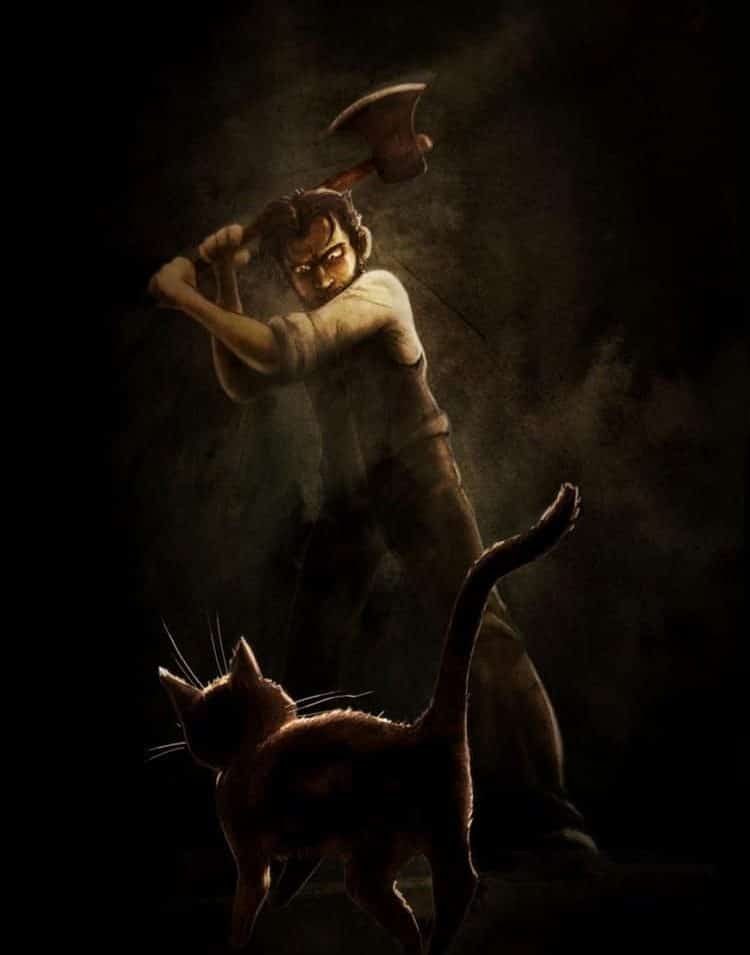
The narrator’s wife: The novel does not give much information about the narrator’s wife, except that she has an immense love for animals.
She is analysed as being more superstitious than the narrator, as she mentions the belief that cats and witches are connected and that one cannot exist without the other.
It is the narrator who seems to have a deeper belief in the supernatural for what does not seem to be an unexplained event. But one thing is certain in the story, the woman is willing to intervene on behalf of the animals when they are in imminent danger, especially when the danger comes from the man.
Pluto: It is the black cat that joins the goldfish, the rabbit, the dog, the birds and the monkey in the collection of pets that the narrator and his wife have in their little domestic house when they marry.
Perhaps the narrator is sincere when he says that the cat is more his than his wife’s pet. The bond that unites this cat with its owner manages to keep him away from the abusive effects of alcohol, which affect his relationship with his pets and his wife.
However, as time passes and tolerance for the addiction grows, it takes its toll, causing Pluto to first lose the narrator’s hand and watch it, before losing it to life at the end of a rope.
White Heart: After Pluto’s death and the fire that burns down the narrator’s house, a second cat appears in the narrative, absolutely identical to Pluto down to one eye, but with a patch of white fur on its chest that distinguishes it from the first.
The fact that it has no real name indicates the emotional bond between it and the superstitious wife and alcoholic husband who claim to be animal lovers; despite the cat’s apparent desire to be friends, the narrator is completely repulsed by the point of attempted murder.
The police: The police arrive to investigate the disappearance of the narrator’s wife, fulfilling the plot function of needing someone for the person they believe has committed the perfect murder to brag about. If only the narrator had not fallen prey to hubris, he would never have unwittingly exposed himself as a murderer, trying to prove to himself how clever he was in front of the worst possible audience at the worst possible time.
Analysis of The Black Cat
Like the narrator of Poe’s “The Tell-Tale Heart”, the narrator of “The Black Cat” is of questionable sanity. At the beginning of the story, the narrator says that he would be “really mad” if he expected a reader to believe the story, implying that he has already been accused of insanity.
The extent to which the narrator claims to have loved his animals suggests mental instability in the form of ‘too much of a good thing’.
His preference for animals replaces “the petty friendship and delicate fidelity of mere man”.
Since the narrator’s wife shares his love of animals, it is likely that he sees her as another pet, since he distrusts and mistrusts people. Furthermore, his inability to understand his excessive love for animals foreshadows his inability to explain the reasons for his actions.
One of Poe’s darkest tales, “The Black Cat” contains his greatest denunciation of alcohol. The narrator’s perverse actions are provoked by his alcoholism, a “disease” and “demon” that also destroys his personality. The use of the black cat evokes various superstitions, including the idea, expressed by the narrator’s wife, that they are all witches in disguise. Another interesting book to read in the horror genre is The Metamorphosis.
Poe owned a black cat. In his “Instinct Against Reason – A Black Cat” he said: The author of this article is the owner of one of the most remarkable black cats in the world, and this is saying a great deal; for it will be remembered that black cats are all witches.
In Scottish and Irish mythology, the Cat Sìth is described as a black cat with a white patch on its chest, similar to the cat the narrator meets in the tavern. The titular cat is named Pluto, after the Roman god of the underworld.
- The Double – see also ” William Wilson “.
- Guilt – see also ” The Heart of the Tale “.
Although Pluto is a neutral character at the beginning of the story, he becomes antagonistic in the eyes of the narrator when he becomes an alcoholic.
Alcohol drives the narrator into bouts of intemperance and violence, to the point where everything angers him: In particular, Pluto, who is always at his side, becomes the malevolent witch who haunts him even as he avoids her presence. When the narrator cuts Pluto’s eye out of its socket, this can be seen as a symbol of self-inflicted partial blindness to his own vision of moral goodness.
The fire that destroys the narrator’s house symbolises the narrator’s “almost complete moral disintegration”. The only remnant is the imprint of Pluto on the wall, representing his unforgivable and incorrigible sin.
From a rhetorical point of view, an effective scheme of omission that Poe uses is diazeugma, or the use of many verbs for one subject; he omits pronouns, emphasises action, and keeps the narrative short and to the point.
Here is a video analysis of this work:
The Black Cat the film
The Black Cat is a 1934 American pre-Code horror film directed by Edgar G. Ulmer and starring Béla Lugosi and Boris Karloff. It was the first of eight films (six of which were produced by Universal) pairing the two iconic actors.
It became Universal Pictures’ biggest box office hit of the year and was also notable for being one of the first films to feature an almost continuous musical score. Lugosi also appeared in the 1941 film of the same name.
The Black Cat was Universal’s biggest box office hit of the year and was the first of eight films (six produced by Universal) to pair actors Béla Lugosi and Boris Karloff.
Cast of the film The Black Cat
- Boris Karloff as Hjalmar Poelzig
- Béla Lugosi as Dr Vitus Werdegast
- David Manners as Peter Alison
- Julie Bishop (billed as Jacqueline Wells) as Joan Alison
- Egon Brecher as the Majordomo
- Harry Cording as Thamal
- Lucille Lund as Karen Werdegast
- Henry Armetta as Police Sergeant
- Albert Conti as Police Lieutenant
- John Carradine as the Organist
Director Edgar G. Ulmer’s film was part of a horror film boom following the release of Dracula and Frankenstein in 1931. The film capitalised on the popularity of Poe and the horror genre, as well as a sudden public interest in psychiatry.
The film has little to do with Edgar Allan Poe’s short story “The Black Cat”, although Poe’s name appears in the credits. Peter Ruric (better known as pulp writer “Paul Cain”) wrote the screenplay.
The classical music soundtrack compiled by Heinz Eric Roemheld (including pieces by Liszt, Tchaikovsky and Chopin) takes up almost 80% of the film.
The film bears no relation to 1941’s The Black Cat, starring Basil Rathbone, except for the presence of Lugosi in both films.
The film, and by extension the character of Hjalmar Poelzig, is inspired by the life of the occultist Aleister Crowley. The name Poelzig was borrowed from the architect Hans Poelzig, with whom Ulmer claimed to have worked on the sets of Paul Wegener’s silent film The Golem.
Critical reception of The Black Cat
After the original 1934 release, The New Times wrote: “The Black Cat is more silly than terrifying. Like Stephen King’s It, the story and dialogue pile on the agony too thickly to give the audience an adequate scare.
The film has an 87% approval rating on review aggregator site Rotten Tomatoes. It also ranked 68th on Bravo’s 100 Saddest Movie Moments for its skinning scene.
“Karloff gets skinned alive at the end,” noted Cramps guitarist and horror aficionado Poison Ivy, “but they show the shadow and somehow it’s more horrible.
Critic Philip French called it “the first (and best) of the seven joint Karloff/Lugosi appearances. The film unfolds as a nightmare involving necrophilia, ailurophobia, drugs, a deadly game of chess, torture, skinning and a black mass with a human sacrifice.
This strange and utterly irrational masterpiece, which lasts just over an hour, has images that linger in the mind”.
In the 2010s, Time Out asked writers, directors, actors and critics who had worked in the horror genre to vote for their best horror films. Time Out ranked The Black Cat 89th in the top 100.
Plot of The Black Cat
The plot of this novel is told from the perspective of a mad narrator who, in his own words, does not expect the reader to believe him. He tells the reader beforehand that he is going to die the next day, but the reader only finds out why at the end of the story. If you want to know another genre of horror fiction, you can read The War of the Worlds.
After setting up his story from this perspective, the man tells the reader about a cat called Pluto that he used to keep as a pet. He describes Pluto as a remarkably large and beautiful animal, completely black.
The narrator’s wife jokes that the cat might be a witch in disguise, given its unusual intelligence. The narrator and Pluto have a close relationship. He takes care of Pluto, and Pluto follows him around the house. It’s a very tender relationship.
Then everything goes wrong. The narrator, an alcoholic, starts to get angry with everyone. He abuses his wife and his other animals, but he never hurts Pluto. But one night the narrator comes home drunk and thinks Pluto is avoiding him. He grabs the cat and it bites him. In retaliation, the narrator cuts out one of the cat’s eyes.
After sleeping off his drunkenness, the narrator is horrified by what he has done, but it is not enough to stop him drinking. The cat’s eye socket heals, but Pluto and the narrator are no longer on good terms. Pluto begins to avoid the narrator. Instead of feeling remorseful, the narrator is simply irritated by the cat’s behaviour.
The narrator hangs the cat “in cold blood” from a tree. That night, his house catches fire. The narrator, his wife and servant escape unharmed, but the fire destroys their home and all their possessions. When the narrator later returns to the ashes, he sees the figure of a cat on the only remaining wall.
Months pass. The narrator sees a cat that looks remarkably like Pluto, except that there is a white spot on its chest. The cat follows him home. At first the narrator likes the cat, but soon he can’t stand it, especially when he notices that one of its eyes is missing.
The more he hates the cat, the more he likes it. The narrator cannot hurt the cat because he is afraid of it. The white shape on his chest turns into a gallows, a direct reminder of his crime against Pluto.
Finally, the narrator becomes so angry that he tries to kill the cat with an axe. His wife intervenes and the narrator ends up killing his wife. He decides to hide the body in his house, behind the basement wall.
The narrator looks for the cat, but it is missing. For three nights he sleeps undisturbed by the cat, then on the fourth day the police come to his house to ask questions about his wife’s disappearance. While investigating, the narrator knocks on the wall he had built to hide his wife’s body. The noise of his knocking causes the cat, which had accidentally sealed itself into the wall, to howl, alerting the police to the presence of the narrator’s wife.
https://www.youtube.com/watch?v=lqm6GkFxnNA
The Black Cat Editorial
“The Black Cat was first published in The Saturday Evening Post on 19 August 1843. At the time, the publication used the temporary title United States Saturday Post. Readers immediately responded positively to the story, reproducing parodies such as Thomas Dunn’s “The Ghost of the Grey Tadpole”.
Review of The Black Cat
This terrifying tale embodies Poe’s ideas about the pathological workings of the criminal mind. Poe believed that criminals were willing to turn themselves in not out of guilt, but for the anticipated pleasure of defying moral authority. Another book that deals with characters with sick minds is Adolf Hitler’s Mein Kampf.
Learn about Edgar A. Poe’s tortured life:
The narrator seems to relish the idea that his crime of hanging Pluto is a sin “beyond the reach of the infinite mercy of the merciful and most terrible God”. His otherwise inexplicable act of stopping the police from leaving and smashing the bricks covering his wife’s body is motivated by the narrator’s desire to “cover up” his “triumph”.
Throughout his account, the narrator undermines his own credibility. For example, he says that his aim is to recount the events of his crime, which he describes as “a series of simple family events”, “clearly, concisely and without comment”.
However, he immediately deviates when discussing the superstitious association between black cats and witches, which he mentions “for no other reason than the fact that it had just occurred to me”.
Later, he states that he is “upstairs” trying to discern a sequence of cause and effect behind the appearance of the image of the dead Pluto on the charred wall, but in the next paragraph he offers a speculative theory of how this happened.
The narrator never takes responsibility for his actions. He blames the demon’s impetuosity, then points to the spirit of perversion, but in the end it is Pluto and his stand-in that the narrator identifies as the real culprit.
By fusing Pluto and the second cat, he claims to be the “arch-demon” cat “whose skill seduced me to murder”. At the same time, the narrator symbolically shares the most striking characteristic of the two cats he despises.
Like these two cats, the narrator is half-blind, committing terrible deeds but unable to see clearly what has happened. As the story unfolds, the language he uses suggests savage characteristics, as when he tells us of his “rabid” desire to talk to the police, or that he frequented “vile places”.
By the end of the story, we know that the narrator is not the victim of a hellish beast, but that he himself is the real beast. Another book by this author worth reading is Edgar Allan Poe’s The Raven.
Video biography of Edgar Allan Poe:

